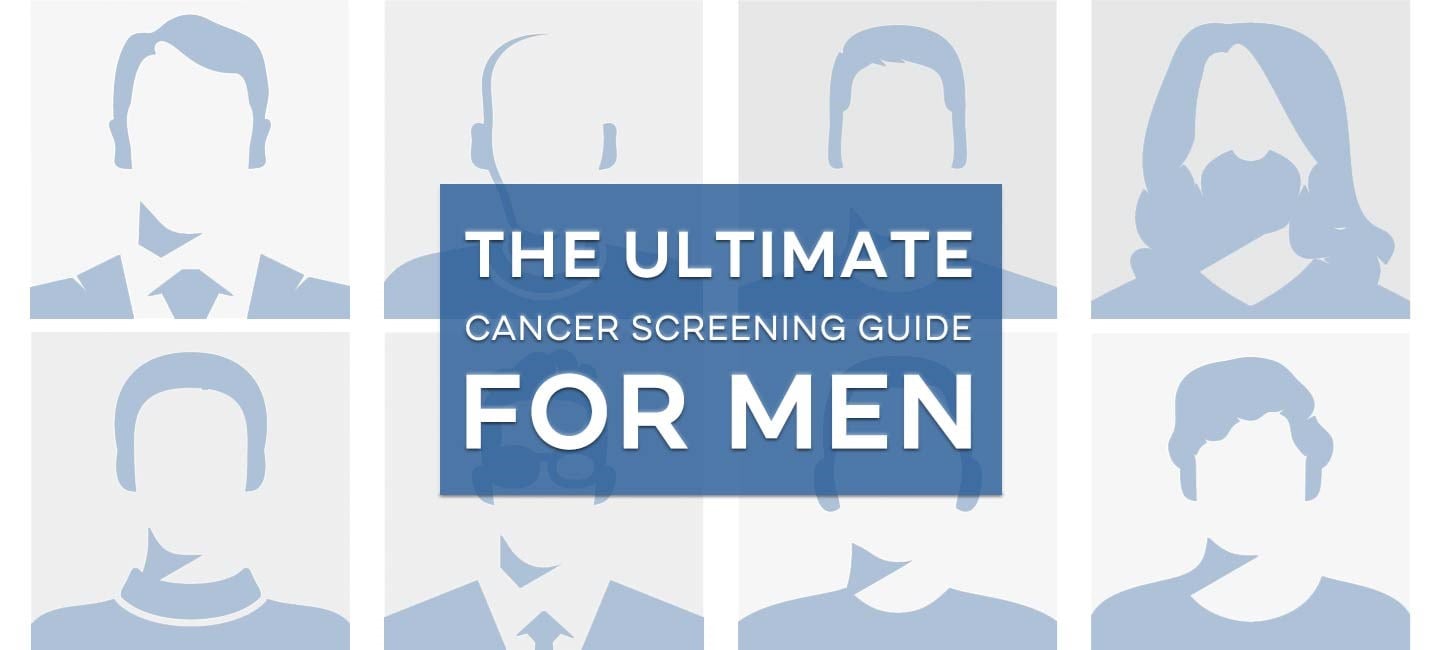Cancer Screening Guide for Men
Health and wellness should always be a top priority. Men, now is the perfect time to take proactive steps towards the early detection and prevention of health problems. We’ve put together a comprehensive list of cancer screening recommendations for men to help guide you through making informed decisions about your well-being.
Prostate cancer screening
Aside from skin cancer, prostate cancer is the most common type of cancer affecting men. One in eight men will be diagnosed with the disease in the course of his lifetime. Men ages 45 to 75 should have a conversation with their doctor about the risks and benefits of prostate cancer screening. African American and Black men, men with a family history of prostate cancer, and men with a family history of an at-risk genetic condition should begin screenings sooner. Prostate cancer symptoms tend to develop in the later stages of the disease, however initial warning signs may include:
- Frequent urination, especially at night
- Painful or burning sensation during urination or ejaculation
- Problems starting or stopping a stream of urine
As the disease progresses, prostate cancer may cause more pronounced symptoms, such as:
- Blood in the urine or semen
- Bone pain that doesn’t go away or leads to fractures
- Difficulty getting or maintaining an erection
- Pain in the pelvic area, lower back, hips or thighs
- Weakened, decreased or interrupted flow of urine
Lung cancer screening
Lung cancer is the second most common type of cancer among men and the leading cause of cancer-related death for both men and women. Each year, more people die from lung cancer than colon, breast and prostate cancers combined. Lung cancer screenings are recommended for those age 50 and older with a heavy smoking history, those who are current smokers or quit within the past 15 years. Prolonged exposure to secondhand smoke, radon, asbestos and other carcinogens or having a family history of lung cancer can also increase your risk. Those who meet these criteria should consider adding routine lung cancer screenings to their proactive health care plan.
Colorectal cancer screening
This year, approximately one in 23 men will be diagnosed with colorectal cancer. Colon cancer screenings should begin at age 45 for individuals at average risk. However, those with certain risk factors are encouraged to begin screenings sooner. Some factors that warrant colon cancer testing can include:
- Having a personal or family history of colon polyps or colorectal cancer
- Having certain inherited syndromes, such as Lynch syndrome or adenomatous polyposis
- Having inflammatory bowel diseases, such as Crohn’s disease or ulcerative colitis
Head and neck cancer screenings
Men are two times more likely than women to develop head and neck cancer. Most forms of the disease are found in the mouth, nose, throat, sinuses or salivary glands and are often caused by alcohol consumption and tobacco use. However, the human papillomavirus (HPV) can also lead to certain types of head and neck cancer. Moffitt Cancer Center experts recommend the examination of a patient’s head, neck and throat as part of an annual physical, as well as an examination of a patient’s mouth during a semiannual dental visit.
HPV vaccinations are covered by most insurance plans and recommended for males and females ages 9 to 26. Adults between the ages of 27 and 45, who have not previously been vaccinated, are also eligible for the vaccine. Talk to your doctor to determine if the vaccine is right for you.
Skin cancer screenings
Skin cancer can develop at any age regardless of gender, ethnicity, race or skin type. Common forms of skin cancer can have a survival rate greater than 95% when they are detected early. Routine skin checks are vital in helping spot cancerous moles. Know what to look for by using the ABC’s of skin cancer as your guide for self-skin checks.
- Asymmetry – a mole that doesn’t match when divided by an imaginary line down the center
- Border – borders of a mole that look blurry, irregular, uneven and/or jagged.
- Color – a mole that has multiple colors or shades, such as red, blue, tan, white or black.
- Diameter – a mole that is wider than a pencil eraser.
- Evolving – moles that change in size, shape, color or texture over time.
New moles, bumps, red or flaky patches and sores that don’t heal properly can also be signs of skin cancer.
Cancer prevention
Asides from undergoing routine wellness screenings, there are other ways you can reduce your risk for developing cancer.
- Achieve and maintain a healthy body weight
- Discuss HPV vaccination with your health care provider
- Exercise regularly
- Know your family history and act accordingly
- Limit alcohol consumption
- Practice safe sex
- Refrain from smoking and using other forms of tobacco
- Stick to a nutritious diet rich in fruits and vegetables and low in saturated fats
Talk to your doctor about your individual risk factors and don’t forget to schedule your annual wellness visit with your health care provider.



